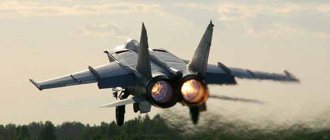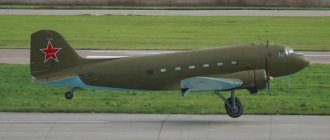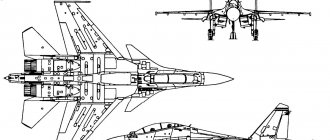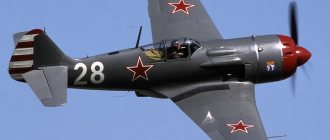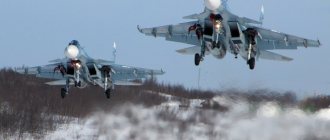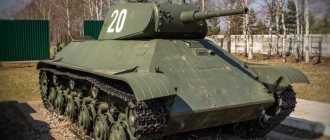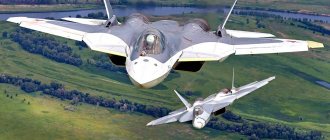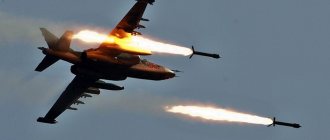The Yak-3 fighter entered the history of Soviet aviation as the fastest production piston aircraft. Created in emergency conditions, the machine was not only suitable for mass production, but also received universal recognition as one of the best fighters of the Great Patriotic War.
The popularity of the Yak-3 turned out to be so enormous that in the early 90s, the Yakovlev Design Bureau released a batch of replicas of the famous fighter. The replica, designated the Yak-3M, has an all-metal construction and an Allison 2L power unit. The cars were intended for collectors.
History of creation
In 1942-43, in order to improve the flight characteristics of the serial Yak-1 fighter, two vehicles with the VK-105PF engine were created. The first copy received an engine with a power of 1180 hp, and the second one had a unit with boost pressure that developed 1240 hp.
The design of the experimental aircraft was made as light as possible, the area of the tail and wing was reduced by 15-20%. The vehicles, designated Yak-1M, had a plywood fuselage skin.
The external contours of the aircraft were redesigned, which improved the aerodynamics of the aircraft.
The cooling system radiator is installed deep in the fuselage.
Oil radiators are located in the wing and have separate channels for air supply, made in the toe of the wing.
Reducing the planes and relocating the oil cooler led to a decrease in fuel and oil reserves. The armament of the experimental vehicles consisted of a ShVAK cannon and a UBS machine gun on the first copy and a new Sh-20M cannon and a pair of UBS on the second.
Testing of the vehicles was carried out from February to October 1943. Based on the results of state tests, the vehicle was recommended for mass production under the designation Yak-3.
Aviation of the Red Army of the Great Patriotic War (part 6) – Yakovlev fighters
During the Great Patriotic War, the Yakovlev Design Bureau worked with extraordinary tension, which could be considered normal for such a difficult time. The most successful Soviet fighters were designed and put into production with enormous effort. During the war, Yaks were produced at 15 aircraft factories. Every day, up to 38 Yak fighters rolled off the production line. By the end of the war, the fleet of these beautiful fighters accounted for almost 2/3 of the entire Soviet fighter aircraft. The words “Yak” and fighter have become synonymous in Russian, and Vladimir Vysotsky even wrote the song “Yak-Fighter.” During 1941-1945, more than 40,000 Yak fighters were produced: 35,086 Yak-1, Yak-7, Yak-9, Yak-3 combat fighters and dozens of their various modifications and variants, 4,955 UT-2 training aircraft, also used as combat weapons. The Yakovlev Design Bureau achieved its most important successes at the moment when the Motherland needed it most. Among the few Soviet enterprises during the Great Patriotic War, it was awarded: on September 18, 1942 with the Order of Lenin and on November 12, 1944 with the Order of the Red Banner. While flying the Yak fighter, three-time Hero of the Soviet Union Alexander Pokryshkin received his first Gold Star. Of the 25 Soviet fighter pilots who became twice Heroes of the Soviet Union, the majority fought on Yaks throughout the entire war or part of it, while French pilots from the Normandy-Niemen squadron once fought on Yaks.
Yak-1 fighter The
Yak-1 fighter was created under the leadership of designer A. S. Yakovlev and was approved for testing in 1940. The fighter was a cantilever monoplane with a mixed design, which was quite well adapted for mass production conditions. The Yak-1 was one of the lightest fighters of its time. The take-off weight of the aircraft was 2,847 kg, with the weight of the empty aircraft being 2,347 kg. The design of the fighter was mixed: the fuselage frame was shaped, welded from steel chromansil pipes. The bow is covered with duralumin, the tail is linen. The airplane wing is made of wood, covered with canvas. The empennage frame is made of duralumin and is also lined with canvas. With the VK-105P engine, the Yak-1 could reach a speed of up to 580 km/h and climb to an altitude of 5,000 meters in 5.4 minutes. In terms of its combat and aerobatic qualities, it was among the best front-line fighters.
The vehicle's armament included 1 ShVAK cannon of 20 mm caliber, fire was fired through the hollow shaft of the propeller gearbox, as well as 2 synchronized rapid-firing ShKAS machine guns of rifle caliber. The peculiarity of this fighter, due to its low weight, was ease of piloting and good stability. In the first half of the Great Patriotic War, this aircraft was one of the main Soviet fighters. It quite harmoniously combined weapons and excellent flight characteristics. Compared to the main German fighter Bf-109E, the Yak-1 had superiority in all types of maneuvers and in speed. But with the advent of the more advanced Bf-109F, its flight characteristics were no longer sufficient.
Realizing this, the Yakovlev Design Bureau worked to improve its combat potential. The aircraft was modified several times. The engine and weapons were changed on it. When replacing the engine with the M-105PF, the aircraft also received new weapons: instead of 2 7.62 mm ShKAS machine guns, a more powerful 12.7 mm UB machine gun was installed on it. Work was also carried out to improve the aerodynamics of the fighter; the visibility of the upper hemisphere from the pilot's cabin was improved and a radio was added. All these measures made it possible to continuously maintain the excellent combat qualities of the fighter, which remained in service with the Air Force throughout the war. During this time, the factories produced 8,721 Yak-1 aircraft of all types.
Performance characteristics of the Yak-1:
Dimensions: wingspan – 10.0 m, length – 8.48 m, wing area – 17.15 sq. m. Take-off weight of the aircraft is 2,850 kg. Engine type – 1 PD M-105PA, power 1050 hp. Maximum speed – 569 km/h. Practical flight range: 650 km. Service ceiling: 10,000 m. Crew – 1 person. Armament: 1x20-mm ShVAK cannon, 2x7.62-mm ShKAS machine gun.
Yak-7 fighter
The Yak-7 was a Soviet single-engine fighter aircraft created shortly after the start of World War II. The aircraft was designed on the basis of the Yak-7UTI trainer, on which full-fledged weapons were mounted, an armored back, protected gas tanks, and a system for filling gas tanks with neutral gas from a carbon dioxide cylinder were installed. At the same time, the photo-cine gun was dismantled, the equipment and controls from the rear instructor's cabin were removed. After this, it became possible to use it for the transfer of small cargo, technical personnel during the relocation of units, delivery of pilots from emergency landing sites, installation of an additional gas tank, etc.
The design of the Yak-7B repeated the design of the Yak-1 fighter and was mixed. At the same time, in comparison with the Yak-1, the single-seat Yak-7 was a more advanced fighter, having the following advantages: the engine mount was made detachable, which made it possible to modify the aircraft for a different engine; the dimensions of the landing gear wheels now fully corresponded to the flight weight of the vehicle; thanks to the shift in the center of the fighter forward, longitudinal stability has significantly increased; the changed ratio between the areas of the stabilizer and the elevator increased the deflection of the elevator and led to improved controllability; An increase in the anti-bonding angle by 1.5° to some extent reduced the risk of the car bonneting during sudden braking, and also shortened the length of the landing run.
On the Yak-7B, the ShKAS machine guns were replaced with UBS, and an RSI-4 transceiver station with a two-beam antenna and mast was installed. On variants of the fighter that were intended for air defense, a landing light, an RPK-10 radio compass, and an electric light alarm for the retracted position of the landing gear were installed. The version of the aircraft with UBS machine guns met the requirements of the front and could be used against both air and ground targets. The aircraft has been in production since 1942; a total of 6,399 aircraft of all modifications, including training ones, were produced. The most popular model, the Yak-7B, was produced from 1942 to 1944; a total of 5,120 fighters were assembled.
Performance characteristics of the Yak-7B:
Dimensions: wingspan – 10.0 m, length – 8.5 m, height – 2.75 m. Wing area – 17.15 sq. m. Take-off weight of the aircraft is 3,010 kg. Engine type – 1 PD M-105PF, power 1180 hp. Maximum speed – 570 km/h. Practical flight range: 645 km. Service ceiling: 9,900 m. Crew – 1 person. Armament: 1x20-mm ShVAK cannon, 2x12.7-mm UBS machine gun.
Yak-9 fighter
The Yak-9 fighter was created by the Yakovlev Design Bureau at the end of 1942 and became the most popular Soviet fighter during the Great Patriotic War. The experience of the first year of the war clearly showed that all Soviet fighters (to varying degrees) have one weak feature - insufficient power supply (the ratio of engine power to aircraft weight). That is why they were inferior to the new versions of the Messerschmitt Bf-109F and Bf-109G fighter in vertical maneuver and rate of climb. It was possible to increase the power supply of a fighter either by replacing the engine with a more powerful one, or by reducing the payload (by weakening the weapons, reducing the fuel supply, etc.), or by lightening the design by replacing wooden elements with metal ones. In 1942, a real opportunity arose in the USSR to use light aluminum alloys in the design of at least some aircraft, one of which was the Yak-9.
When creating this aircraft, the Yak-7B fighter with an M-105PF engine was used as a basis. When creating a new fighter, the wooden wing spars were replaced with metal ones. This event alone allowed me to lose 150 kg of weight. The fighter's armament consisted of a cannon and a large-caliber synchronized machine gun. The aircraft received a slightly increased fuel capacity and better visibility from the cockpit. Production of the Yak-9 fighter began at the end of 1942. The machine had excellent maneuverability and excellent aerobatic qualities, and was stable in control. Compared to the Yak-1 and Yak-7B, the new fighter had greater speed, climb rate and better vertical maneuver. This fighter could successfully fight the best German aircraft.
The Yak-9 became a universal machine with broad specialization. In 1943, the Yak-9T fighter, armed with a 37-mm cannon, was created, in 1944, the Yak-9K fighter, armed with a 45-mm cannon. These fighters were intended to combat bombers, as well as to attack ground targets. In 1943, Yak-9D fighters with an increased fuel supply began to arrive at the front, and in 1944 the Yak-9DD version began to arrive. The maximum flight range of the Yak-9D was 1400 km, for the Yak-9DD it was 1800 km, while for the serial Yak-9 it was 910 km.
After the development and production of the new powerful VK-107A engine designed by V. Ya. Klimov, Yakovlev had a rare opportunity to seriously improve the performance of the Yak-9 fighter. At the very end of 1943, a new modification of the Yak-9U was created. This fighter had an excellent rate of climb and the highest speed; its performance was a record for the beginning of 1944. The Yak-9U fighter stood out for its excellent maneuverability in both the vertical and horizontal planes. In 1944, its serial production began, and the aircraft went to the front. After the war, its production continued for several more years. The Yak-9U was one of the last piston-powered fighters produced in the USSR. A total of 16,769 Yak-9 fighters of all modifications were produced during the war years.
Performance characteristics of the Yak-9U:
Dimensions: wingspan – 9.74 m, length – 8.55 m, height – 3.0 m. Wing area – 17.15 sq. m. Take-off weight of the aircraft is 3,204 kg. Engine type – 1 PD VK-107A, power 1500 hp. Maximum speed – 672 km/h. Practical flight range: 675 km. Service ceiling: 10,650 m. Crew – 1 person. Armament: 1x20-mm ShVAK cannon, 2x12.7-mm UBS machine gun.
Yak-3 fighter
The Yak-3 fighter was created by the Yakovlev Design Bureau in 1943. During its design, the main emphasis was placed on a sharp increase in its flight performance, which was supposed to provide the aircraft with decisive superiority in air battles with German fighters. Since at that time the designers did not have a suitable engine, they focused their attention on improving the weight and aerodynamic perfection of the fighter. The well-known Yak-1 was taken as a basis. At the same time, a noticeable reduction in aerodynamic drag was achieved by improving individual layout elements and reducing the size of the wing.
Compared to the Yak-1, the new fighter has become almost 200 kg lighter. The engine builders also had their say and carried out a second boost of the M-105PF engine, increasing its power by another 80 hp. The new engine was designated M-105PF-2 (since 1944 VK-105PF-2). Serial production of the Yak-3 began in 1944. Air battles demonstrated the superiority of the new fighter over enemy aircraft. The actions of the Soviet air units that had this fighter in service were very effective. French pilots from the Normandy-Neman regiment fought on the Yak-3. In terms of tactical use, the Yak-3 could not replace other fighters with more powerful weapons or flight range, but it complemented them perfectly. The Yak-3 embodied the idea of a light, maneuverable and high-speed fighter.
Among the shortcomings of the fighter, pilots noted a small fuel reserve, which made free hunting in this machine ineffective. Therefore, the Yak-3 was usually used to call ground posts. Another drawback was the weak fastening of the upper wing skin; there were even cases of its tearing off when the fighter exited a dive at the maximum permissible speed. Knowing about this feature, the pilots tried not to go into unacceptable modes, so cases of skin failure stopped, and the maneuverable and light aircraft quickly gained popularity. The Yak-3 was one of the most advanced Soviet fighters during the war; its design was distinguished by rationality and simplicity. A total of 4,848 Yak-3 fighters were produced during the war years.
Performance characteristics of the Yak-3:
Dimensions: wingspan – 9.2 m, length – 8.5 m, height – 2.42 m. Wing area – 14.85 sq. m. Take-off weight of the aircraft is 2,692 kg. Engine type – 1 PD VK-105PF-2, power 1240 hp. Maximum speed – 646 km/h. Practical flight range: 648 km. Service ceiling: 10,400 m. Crew – 1 person. Armament: 1x20-mm ShVAK cannon, 2x12.7-mm UBS machine gun.
Sources of information: -https://www.otvoyna.ru/yaki.htm -https://voenhronika.ru/publ/vtoraja_mirovaja_vojna_sssr_khronika/sovetskaja_aviacija_vtoroj_mirovoj_vojny_rossija_serij_2009_god/22-1-0-921 -https://www.airwar.ru/ enc/fww2/yak7b.html -https://www.airwar.ru/enc/fww2/yak1.html -https://www.airwar.ru/enc/fww2/yak9u-107.html -https:// www.airwar.ru/enc/fww2/yak3.html
Design
The Yak-3 fighter is a monoplane with a piston power plant located in the nose. The vehicle uses a two-spar cantilever wing. The spars are made by riveting from duralumin elements. Ribs of combined construction - wood and aluminum.
The remaining elements of the wing structure are made of wood. The top of the wing is covered with a special fabric impregnated with varnish. The wing is equipped with flaps of increased area, used to facilitate landing, as well as ailerons.
The wing is attached to the Yak-3 fuselage at six points.
The landing gear has two legs and a tail spike. All landing gear points are retractable in flight. The racks have brake mechanisms. The crutch is equipped with a lock connected to the elevator.
The single-fin tail unit has a reduced area compared to previous models of Yakovlev Design Bureau fighters. The elevators are equipped with aerodynamic and weight compensators. The weight compensator is a cast iron casting located inside the handlebar.
The power plant consists of a 12-cylinder V-shaped engine VK-105PF2, equipped with a mechanical compressor. The compressor provided pressure up to 1100 mmHg. Art. The motor rotated a three-blade propeller equipped with a pitch control mechanism. Screw diameter 3000 mm. The motor is mounted on a space frame.
The engine is equipped with a synchronous control system for propeller pitch and engine speed, which ensures optimal operating conditions. The engine thermostat is equipped with an actuator that automatically controls the water radiator shutters.
This ensures automatic maintenance of the engine operating temperature. To increase the efficiency of the power plant, jet exhaust pipes are used. Each cylinder has its own exhaust pipe.
The use of the reactive force of exhaust gases made it possible to increase the maximum flight speed. The fuel supply is located in three wing tanks, containing 350 liters of aviation gasoline of grades 4B-78, 1B-95 or B-100.
Gasolines had an octane number in the range of 95-100 units.
One of the tanks is consumable; fuel for engine operation is taken from it. The tanks have fire protection, which includes a layer of sponge (only on the lower part of the bodies) and regular rubber.
The supply tank is equipped with a reinforced protector. The cockpit is protected by 8.5 mm armor plate installed behind the seat back. The sheet reaches the line of the pilot's shoulders. Above there is transparent armored glass mounted in a metal frame.
The lantern is made of ordinary plexiglass, without armored glass. The movable element of the lantern is equipped with an emergency release mechanism.
Yak-3 design
The Yak-3 aircraft is a piston monoplane fighter, which is controlled by one person and runs on one engine. It has a mixed type design. Its main feature is that one part of the elements is made of wood or linen, and the second is made of metal. It had a low cantilever wing and a retractable tricycle landing gear. For aviation technology, the design of this aircraft is considered to be as simple as possible, but well thought out.
The pilot's cabin was located in the center of the fuselage and was covered with a three-section canopy, the rear of which consisted of armored glass. The pilot also had other means of protection: an 8.5 mm thick armored installation covered him from behind, and a similar armrest to the left.
The middle section of the canopy had an emergency release system, which was used to evacuate the pilot. The load-bearing structure of the fuselage contained chrome-plated pipes, to which the engine mount was welded. The front of the aircraft was made of metal, while the rear elements were sheathed in simple plywood.
Airplane wings were made from duralumin, wood, canvas and plywood. They were two-spar, and the mechanization included ailerons and landing flaps. The tail of the Yak was cantilever. It consisted of a wooden keel and stabilizer. The elevators and directional rudders were made of metal, and fabric sheathing was applied on top of them. The brakes and landing flaps were controlled using a pneumatic system.
The aircraft's engine was V-shaped and had a water cooling system. Its power was 1240 hp. With. The propeller had a variable pitch, and the gas tanks were located inside the wings. They were protected by a protector and filled with neutral gas. One of the tanks was consumable. The radiator responsible for cooling was moved deeper into the fuselage, and the damper was controlled automatically.
The plane had a very small amount of on-board equipment. Only the most necessary elements were installed on it, which were needed for combat in daytime conditions in normal weather. This was done to minimize the weight of the machine. Of course, they left the radio station. On the front of the Yak, a ShVAK cannon was installed in the engine camber. It was fired through the gearbox and the propeller hub. It was also equipped with one or two UB machine guns.
Armament
The armament of a standard Yak-3 fighter is located near the power plant. The main weapon is the 20 mm MP-20 cannon (variant version of ShVAK), installed between the cylinder blocks.
The gun barrel is routed through the hollow shaft of the propeller gearbox. The ammunition load consists of 120 shells. The gun reloading system is powered by a pneumatic system. Fire control is electrified. Additionally, two 12.7 mm BS machine guns are installed. The machine guns are located outside the engine and fire through the propeller.
The machine guns' ammunition consists of 150 rounds per barrel, located in separate boxes. Some modifications of the aircraft were equipped with three 20-mm B-20 cannons. One cannon fired through the propeller shaft, the rest were synchronized.
A small-scale version of the aircraft was produced with a 45-mm NS-45 cannon and two BS.
There was a prototype version armed with a 37 mm N-37 motor cannon and two synchronized B-20s.
b TEBPYUKE 1943 Ts. nM OPEDYARYUBKK YANANI DUKEMEEEE PUGBHRKHE YYULNKERYU y-1, NR YNRNPNTsN NRKHVYUKYA, B NYAMNBMNL, LEMEHL BEYANL H YPSHKNL LEMEYEI OKNYYUDH. KERMSHE DYUMMSHE LYUKHMSH GULERMN SKSVIHKHYAE LYYYAHLYUKEMYYAINPNNYARE MU BSHYANRE 4430 L BNGPNYAKYU DN 633 YL/V, BPEL MYUANPU BSHYANRSH 5000 L OPH BGKERMNL BEYAYE 26 55 YTS YANYPYURHKNYAE DN 4.1 LHMSRSH. b YAEMMRJAPE 1943 Ts. TSNDYu ASHK ONDTSNRNBKEM SKSVIEMMSHI BYUPKHYUMR- yY-1l “dSAKEP” with ShchRNTSN YYULNKERYU ONKNRMMSCH NAHBYS UBNYARNBNI VYUYARKH TCHGEKKFYU GYULEMHKH MU TU MEPMSCH RNKYKHMNI 2 LL, DNPYUANRYUKH YAKHYARELSH NUKYUFDEMKH BNDSH KH LYUYAKYU, OPHLEMKKH AEGLYUVRNBSCH YUMREMMS, YNKEZHEBNI OPHZHEK I LSYNI YALEMHKH MU YNKKHLURNPMSHI , SKSVIHKH APNMHPNBYUMHE KH ONYARYUBHKH MNBSHI BHMR.KERVHYH-HYAOSHRYUREKH NYARYUKHYAE DNBNKEMSH MNBSHL HYARPEAHREKEL. b KHU NRGSHBYUU TsNBNPKHKNYAE, VRN ╚Y-1l NAKYUDUER OPEBNYAUNDMNI TsNPKHGNMRYUKEMNI X NYNAEMMN BEPRKHYUKEMNI LYUMEBPEMMNYARECH. LYuYYAHLYUKEMYYAYNPNYARE GMYUVHREKEMN SBEKHVHKYUYAE ON YAPYUBMEMHCH I YAEPHIMSHLH YAYULNKERYULH y. oPH MYUKHVHH BSHYANYKHU KERMSHU DYUMMSHU YAYULNKER NYARYUKYA OPNYARSHL B OHKNRKHPNBYUMHH X ME RPEASER ANKEE BSHYANYNI ONDTSNRNBYKH KERMNTSN YANYARYUBYU╩.
KERVKHY NAKERYU TSEMEPYUK-LUINP YUBKHYUZHKH TCEPN YANBERYAYNTSN YANCHGYU OERP lHUYUIKNBKHV YARETYUMNBAYKHI OKHYUK : ╚sVHRSHBYU NRKHVMSHE KERMSHE DYUMMSHE YYULNKERYU, UNPNEE BNNPS FEMHE KH ANKENE SDNAYARBN DK KERMNTSN YANYARYUBYU, ZHEKEYANNAPUGMN PAINLEMDNBURE YUY LNFMN ASHIARPEEE BMEDPHRE DUMMSHY SHYGELOKP B YAEPKHIMNE OPNKHGBNDYARBN BGULEM ъY-1 Х ъ Y-7, MENAUNDHLN NYARYUBHRE RNKEIN y-9 DK SYARYUMNBYKH MU MHU B DUKEMEYEL LNRNPNB l-107yu╩.
KhRYUY, NVEPEDMNI HYARPEAHREKE ONKSVHK OSREBIS B FHGME, YU GYUNDMN KH MNBNE KHL - yY-3
. oEPBSHE YAEPKHIMSHE YYULNKERSH MUOPYUBKHKH B 91-I KHYARPEAHREKEMSHI YUBKHYUZHNMMSHI ONKY 2-I BNGDSSMNI YUPLHKH, YNRNPSHI B KHCHME 1944 Ts. EBNBYAYNI NOEPYUZHHH. ANKEE 40% KERMNTSN YANYARYUBYU ONKYU YANYARYUBKKKH LNKNDSHE OHKNRSH, MKHYNTSDU ME OPKHMHLUBKHE SVYUYARKH B ANYU REL ME LEMEE, GYU ONKRNPU LEYAZHYU NMH SIAOEMN BSHONKMKHKH 4 30 ANEBSHU BSHKERNB OPNBEKH ORRE BNGDSMSHU TsPSOONBSHU ANEB, SMHVRNFHB 23 YAYULNKERYU OPNRRHBMKHYU. YaBNH ONREPH YANYARYUBHKH DBYU-3. bSHBND OKHKNRNB ASHK NDMNGMYUVEM: ╚mu BSHIANRYUU DN 5000 L (BSHYE ANEB ME OPNBNDHKNYAE) y-3 OPEBNYAUNDHR X Me-109 X tb-190 y-3 KETSYN DNTsNM'ER KHYARPEAHREKH OPNRKHBMKHYU MU BEPRKHYUKEMNL BNYAUNDYYEL X MKHYUNDYYEL LYUMEBPE╩ .
nyanaemmn GUONLMKHKYA KERVKHYUL ANI 16 KhChK 1944 TSNDYU, YNRNPSHI ONYUGYUK VRN YAYULNKERSH YY-3 I SIAOEUNL LNTsSR BEYARKH ANPEAS I VHYAKEMMN OPEBNYAUNDYKHL OPNRKHBMKHYNL aNI MYUVYUKH DEYA'RE YY-3 OPNRRHB BNYAELH LE-109 X VERSHPEU TA-190 I MYUPYYHBYUMHEL YAKHK I MYUEI YARNPNMSH DN 18 X DN 24 YYULNKERNB YAN YARNPNMSH OPNRKHBMKHYU b KHRNTSE ASHKN YAKHRN 15 BPYUFEYAYKHU KHYARPEAHREKEY KHE NDHM yY-3.
oEPBSHE DBE YANRMH YAEPHIMSHU y-3 BNNPSFYUKHYAE OSYNI BUY KH NDMHL YAHMUPNMMSHL OSKELERNL sa, YU GYUREL ASHK SYARYUMNBKEM BRNPNI YAHMUPNMMSHI sa xG MEDNYARYURYNB YYULNKERYU KERV HYH NRLEVYUKH LYUKSHY GYUOYUYA RNOXBYU, VRN DEKYUKN MESHTTEIRKHBMNI YABNANDMSCH NUNRS BBHDS LYUKNI OPNDNKFHREKEMNYARKH ANEBNTSN BSKERYU. ONSCHRNLS ъY-3 HYAONKEGNBYUKHYAE B NYAMNBMNL ON BSHGNBS MUGELMSHU ONYARNB. dPSTSNI MEDNYARYURNY -YAKUANE YPEOKEMHE BEPUMEI NAHBYKH YPSHKYU. aSHKKH DUFE GYUTHYAKHPNBYUMSH YAKSVYUKH ITS NRPSHBYU MU BSHUNDE YAYULNKERYU HG OKHYKHPNBYUMH I LYUYAHLYUKEMNI YAYNPNYARECH. ndMUYN ASHBUKH YAKSVYUKH, VRN MEYALNRP MU RUYHE ONBPEFDEMHYARPEAHREKH YANBEPYUKH MNPLYUKEMSCH ONYUDYS. gMYU NOYUYAMSCH NYNAEMMNYARE LYUKHMSH, KERVKHYKH YARYUPYUKKHYAE ME BSHUNDHRE MU COPPERYARKHLSHE PEFKHLSH, ONRNLS MEOPHYRMNYARKH YAYNPN OPEYYURKHKHAE, KH KETSYKHI LYUMEBPEMMSHI y- 3 ASHIARPN GYUBNEBUK ONOSKPMNYARE.
nRKKHVMSHE KERMSHE DYUMMSHE LYUKHMSH, LMNTsNVHYAKEMMSHE BPUFEYAYKHE YAYULNKERSH, ONBEPFEMMSHE B ANU MU SHRNL HYARPEAHREKE, KH BSHIANYKHI SHLNZHNMYUKEMSHI ONDZEL, UYUPYUREPM SHI DK GUYKCHVHREKEMNTSN OEPKHNDYU BNIMSH YAONYANAYARBNBUKH RNLS VRN B YANGMYUMKH LMNTSKHU OHKNRNB yY-3 YARYUK YAHLBNKNL YANBERYAYNTSN KHYARPEAHREK OPEDBEYARMKHYNL oNAEDSH.
lSHYAKKH REU, IRN KERYUK KH YAPYUFYUKYA MU AY-3, ONFYUKSI MUHANKEE NAPYUGMN BSHPYUGKHK TSEMEPYUK-LUINP YUBHYUZHHH CHAPNI YANBERYAYNTSN YANCHGYU YNLYUMDHP 303-I YUBHYUZHNMMNI D KHBKHGHKH TSENPTSKHI METEDNBKHV GUYUPNB: ╚DN ONKSVEMKH VYUYARLH 303-I DKHBKHGHKH YYULNKERYU AY-3 Kommersant KERYUK MU BYAU KHYARPEAHREKU MYUVKHMYU NR x-2AHYA, BYKCHVYU KHMNYARPUMMSHE, YU RUYFE KHYARPEAHREKH y-1, y-7a, y-9 (BYAU BYUPHYUMRNB). b ONYAKEDMEE BPEL KERYUK MU YAYULNKERE kYu-5ti YAVKHRYU ETSN MYUKHSVHL. I ONYARSOKEMKHEL AY-3 BSHONKMKHK MU MEL PJD ONKERNB KH YADEKYUK YAKEDSCHYKHI BSHBND ONDNAMNLS HYARPEAHREKCH MER YNMYSPEMRNB. b SHYYAOKSYURYUZHKH AY-3 OPNYAR X DNYARSOYEM REUYANYARYUBS, SYARNIVKHB OPH BGKERE X OPH ONYUDYE, B OHKNRYUFE DNYARSOYEM KCHANLS KERVHYS VRN YANBEPJEMMN HYAKCHVEMN DK YAYULNKERYU kYu-5tm. KERVKHYULKH 18-TSN TSBUPDEYYYNTSN ONKYU KH NRDEKEMNTSN KHYARPEAHREKEMNTSN ONKYU ╚mNPLYUMDHЪ╩ ъY-3 ASHK NYABNYOM ONYAKE 3-5 VYUYANB ONKERYU. mu YAYULNKERE y-3 Kommersant OPNBEK PJD SVEAMN-BNGDSMSHU ANEB I y-9 X kYU-5 X BYAETSDU BSHUNDHK ONAEDHREKEL. oPHUNDHKNYAE BYARPEVYUREYA MU ONKE AN YA Me-109 KH YY-3 ONYUGYUK YUAYANKCHRMNE OPEBNYUNDYARBN╩.
kCHANOSHRMN, VRN TSEMEPYUK GUYUUPNB ONYAKE BNIMSH DNATSNE BPEL ME PUYAYARYUBYUKYAN YABNHL y-3. x B 50th TsNDSH SCHRNR YAYULNKER “ASHK UNRE YSDYU, HYAOPYUBMN BSHFHLYU YABNH YAELEYANR YHKNLERPNB B VUYA MU OKHYHPNBYUMHH” .
aEAYAONPMN, ъY-3 - NDHM XG YAYULSHU YANBEPEMMSHU MYUKHU KHYARPEAHREKEY BPELEM BEKKHYNI nREVEYARBEMMNI BNIMSH. YNMYARPSYZHKHYARPEAHREK ASHKYU OPNYARYU KH PYUZHNMYUKEMYU NYAMNBS TCHGEKKFYU YANARYUBKKYU YARYUKEMYU RPSAVYURYU TEPLU. I ZHEKECH YANYPYUYEMH I BEAT THE WARMTH TCHGEKFYU BSHONKMKYUYAE GYUZHEKN I LNRNPYULNI. b NYARYUKEMNL YYUPYUYA TCHGEKKFYU RYU FE, YUY H ETSN RENPERKHVEYAYKHE NABNDSH ME NRKHVYUKYA NR yY-1, yY-7 X yY-9. b MNYANBNI VYUYARKH NAHBYS TCHGEKKFYU YANYARYUBKKKH KETSYNYAZELMSHE DCHPUKEBSHE YUONRSH, UBNYARNBYU VYUARE NAHBYUKYUYAE TYUMEPNI. yPSHKN ъY-3 MEPUGZELMNE DBSUKNMFEPNMMNE. oPNTHKE YPSHKYU - “YARYUMDYUPRMSHI YINBKEBYAYKHI” Clark YH I NRMNYAHREKEMNI RNKYKHMNI 14% S YNPM X 7% MU YNMZHE YPSHKYU. dKЪ YAPYUBMEMHЪ MUY-1, ъY-7, ъY-9 - 15% S YNPM X 8% MU YNMZHE. yPSHKN HLEKN LERYUKKKHVEYAYHI YYUPYYUYA-KNMFEPNMSH, MEPBCHPSH H TYUMEPMSCH NAHBYS. yYUY X MY AY-9 NAHBYU OPHYKEKHBUKYUYAE Y YAOEZHHYUKEMSHL TYUMEPMSHL MYYKYYYUL, OPHYKEOYUMMSHL Y LERYUKKHVEYAINLS YYUPYYUYAS GUYKEOYULH. NOSHR ANEBNTSN OPHLEMEMKH ONYUGYUK VRN RUYNE YANEDHMEMKHE MEDNYARURNVMN OPNVMNE.
sFE ONYAKE BNIMSH DKЪ ъY-3 ASHKN YADEKUMN YPSHKN I DCHPUKEBNI NAKHBYNI MN YEPKHIMN SCHRNR YAYULNKER ME YARPNHKYA. ndMUYN LERYUKKKHVEYAYNE YPSHKN y-3 BYAINPE MUKN OPHLEMEMHE MU SVEAMN-RPEMKHPPNBNVMNL y-11 X MU PEYURKHBMNL y-15. рНВМН РУИФЭ MU SHCHRKHU YAYULNKERYUU MU LERYUKKKHVEYAYKHE ASHKH GYULEMEMSH DEPEBMMSHE YHKE H YARYUAHKHKHYURNP yY-3. mu BYAEU KHYARPEAHREKU YINBKEBYU DK NOPEPEMKH HYAONKEGNBUKYA OPNTKHKE RAF-30.
YAKHKNBYU SYARYUMNBYU HYARPEAHREK YANYARNKYU HG LNRNPYU by-105ot2 LNYMNYARECH 1240 K.Ya. I BNGDSMSHL BKHMRNL YUBRNLYURKHVEYAYKH HGLEMYELNTSN YUTSYU bkh-105yab-01. aEMGNAYUYKH, YUY MU BYAEU HYARPEAHREKU YINBKEBYU, PYUGLEYYUKHYAE B YPSHKE, KH NAYKHI NAZEL YANYARYUBKK 370 KHRPNB. bNDJMNI PUDHYURNP SYARYUMNBHKH GYU YUAKHMNI OHKNRYU. nyanaemmnyare SYARYUMNBYH BNDJMNTSN PUDHYURNPYU MU y-3 GUYKCHVYUKYUYAE B RNL, VRN NM ASHK TSKSANYN ╚SRNOKEM╩ B TCGEKЪF, YU YUMYUK ONDBNDYU BNGDSUYU Y PUDHYURNPS PEGYN P YYYAHPKYA. schRN OPKHBNDHKN Y SLEMEEMKHCH YAYNPNYARKH BNGDSMNTSN ONRNYU, NADSBYUCHYETSN PUDHYURNP. b PEGSKERYURE SHTTEYRKHBMNYARE NUKYUFDEEMKH ONBSHYUKYUYAE, YUSCHPNDKHMYULHVEYAYNE YANOPNRKHBKEMKHE YYULNTSN PUDHYURNPYU, YUY H ETSN MYUPSFMNTSN NAREYUREK YASEYYARBEMMN YAMKHFUKNYA E. pHR FE OPKHMZHHO HYAONKEGNBYUKYAKH OPH YNLONMNBYE LYUYAKNPYUDHYURNPNB. bNNPSFEMKHE yY-3 YANYARNKN HG LNRNP-OSYKH byyu X DBSU YAHMUPNMMSHU OSKELERNB sa.
I ZHEKECH OPEDEKEMNTSN NAKETSVEMKH MU YY-3 ASHK SYARYUMNBKEM LHMKHLYUKEMN MENAUNDHLSHI YNLOKEIR ANPRNBNTSN NANPSDNBYUMKH, ONGBNKKHBKHI BEYARKH ANI DMEL B OPNYARSHU LERESYAKNBKH YU. NAGYUREKEMSHL SHKELEMRNL NANPSDNBYUMKH ASKYU PUDHNYARYUMZHKH NAEYAOEVKHBUCHYU DBSUYARNPNMMCHCH PUDHNYABGE.
BSHOSYAY H SANPYU YUYAYAKH, ONYUDNVMSHU YKHRYNB, SOPYUBKEMKHE RNPLNGYULH MU BYAU KHYARPEAHREKU YINBKEBYU NYASYYARBKKKHYAE OMEBLNYAHYARELNI. ON YAPYUBMEMHCH I TSKHDPNYAHYARELYULH, HYAONKEGSELSHLH DK SHCHRKHU JACKEYS MU KHYARPEAHREKYU kYUBNVIHMYU HKKH I SHCHKEIRPNYAHYARELYULH YULEPHYUMYUMYHU HYARPEAHREKEY, OMEBLURKHYU A SHKYU LEMEE MUDEFMNI DNYARYUBKKYU LMNTsN UKNONR LEUUMKHYUL .GYURN SHYNMNLKH BEYAYU YANYARYUBKKYU DEYAYRYKH YHKNTsPYULLLNB.
I ONEBKEMKHEL AY-3 B MUYEI YARPYUME ASHK MYUKYUFEM LYUYAYANBSHI BSHOSYAY HYARPEAHREKEY, GMYUVKHREKEMN OPEBNYAUNDHBKHU YAYULNKERSH OPNRKHBMKHYU, GYUBNEBYUMN AEGPUGDEKEMNE TSNYAOND YARBN B BNGDSUE, X KHRNTs BNIMSH ASHK SFE OPEDPEYEM.
cru:
| lNDHTHYUZHH | ъY-3 |
| pYUGLUU YPSHKYU, L | 9.20 |
| dKKhMYu, L | 8.50 |
| bSHYANRYU, L | 2.42 |
| OKNYYUDE YPSHKYU, L2 | 14.85 |
| I love it, JC | |
| OSYARNTSN YYULNKERYU | 2123 |
| MNPLYUKEMYU BGKERMYU | 2692 |
| RHO DBKHTSUREK | 1 od by-105ot2 |
| lnymnyare, K.Ya. | 1 U 1240 |
| LYUYAKHLYUKEMYYAINPNYARE, YL/V | |
| WITH GELKH | 567 |
| MU BSHIANRE | 646 |
| oPUYRHVEYAYU DUKEMNYARE, YL | 648 |
| YAYNPNONDZELMNYARE, L/LHM | 1111 |
| oPUYIRKHVEYAYKHI ONRNNKNY, L | 10400 |
| schYHOYUF | 1 |
| bNNPSPHEMHE: | NDMU 20-LL OSYU byuy, DBYU 12.7-LL OSCELERY say |
| bottom. KhMTNPLYUZHKH: |
| VEPREF "YINBKEB AY-3 (1)" VEPREF "YINBKEB AY-3 (2)" VEPREF "YINBKEB AY-3 by-105ot" pkshch "yNBKEB yY-3 « | yu.ya.YNBKEB S yY-3 |
| yY-3 MY HYAOSHRYUMKHU B mxx bbya | |
| ъй-3 ОЭПБШУ ЯЭПХИ | |
| ъИ-3 ONKYU “mNPLYUMDH-MELYUM” | |
| ъИ-3 ONKYU “mNPLYUMDH-MELYUM” | |
| ъИ-3 ONKYU “mNPLYUMDH-MELYUM” | |
| ъИ-3 ONKYU “mNPLYUMDH-MELYUM” | |
| ъИ-3 ONKYU “mNPLYUMDH-MELYUM” | |
| ъй-3 I SHYAOOEPHLEMRYUKEMNI YAKHKNBNI SYARYUMNBYNI | |
| ъй-3 I SHYAOOEPHLEMRYUKEMNI YAKHKNBNI SYARYUMNBYNI | |
| ъй-3 I RSMMEKEMSHL BSHUKNOMSHL YNKKEIRNPNL | |
| oPKHANPMYU DAYYU-3 |
IWELSH:
| ъЯ-3 (c) Zbigniew Luranc |
| YNLONMNBNVMYU YAUELYU-3 (c) Zbigniew Luranc |
bYUPHYUMRSH NYPYYAYH:
| ъЯ-3 6-И ЦУХД |
| ъЯ-3 150-ЦН ЦУХО 13 ЦУХД |
| ъИ-3 YUSCHPNAYURKHVEYAYNI TsPSOOSH |
| ъИ-3 ONKYU “mNPLYUMDHЪ-MELYUM”, 1943 TsND |
| ъИ-3 ONKYU “mNPLYUMDHЪ-MELYUM”, 1945 TsND |
| ъY-3 bbya chTSNYAKYUBHH |
| YaOHYANY HYARNVMKHYNB: |
| legal entity REOUMEZH. KHYARPEAHREKH y OEPKHNDYU BEKKHYNI nREVEYARBEMMNI BNIMSH yBKHn. yNMYARYUMRHM yNYALHMYNB. KHYARPEAHREKE ъY-3 — LEVRYU OHKNRYU yaYULNKERSH LHPYU. bBVEYAKUB yNMDPYUREEB. oPEDBEYARMHY ONAEDSH UBPNB b.a. KHYARNPKH YNMYARPSYZHHI YAYULNKERNB B yayap 1938-1950 CC. YaKHLYINB a.k. YaYULNKERSH YARPIUMSH YANBERNB. 1917-1970 YaYULNKERSH YARPIUMSH YANBERNB “bNIMYU B BNGDSUE” ╧31-34. KHYARPEAHREKH ъY-1/3/7/9 BN bRNPNNI lKHPNBNI BNIME Skrzydla. Zbigniew Luranc. Jak-3 TBiU. Tomasz J. Kowalski. Samolot mysliwski Jak-3 Squadron/Signal. Aircraft Number 78. Hans-Heiri Stapfer. Yak Fighters in Action |
sTSNKNY MEAYU. 2011
Performance characteristics
A comparison of some technical parameters of the Soviet Yak-3 aircraft and its German rivals shows the speed advantage that the FW-190A-8 had. The maximum speed of the German aircraft was achieved in afterburner.
The greater weight of the FW-190 did not allow it to conduct active maneuverable combat on equal terms with the Yak-3. The more nimble Messerschmitt was inferior to Yakovlev’s car in speed and acceleration dynamics at low and medium altitudes.
| Parameter | Yak-3 | Bf-109G-6 | FW-190A-8 |
| Length, mm | 8490 | 9020 | 900 |
| Wingspan, mm | 9200 | 9920 | 10510 |
| Empty weight, kg | 2105 | 2675 | 3200 |
| Take-off weight, kg | 2650 | 3200 | 4417 |
| Maximum speed, km/h | 645 | 631 | 685 |
| Flight range, km | 648 | 560 | 800 |
| Ceiling, m | 10700 | 11550 | 11410 |
Reworking the fuselage of a prototype aircraft
The designers carefully reviewed the entire design of the prototype. Heavy wooden parts were replaced with lightweight duralumin ones, especially for the wing spars and tail unit. Since the engine power increased, and, accordingly, the flight speed, it was possible to reduce the area and span of the wing. The Yak-3 drawings have been adjusted. Calculations showed that it was necessary to reduce the wing span by a meter, and the wing area, as a result, decreased by 2.3 square meters. m. All details of the aircraft were revised. As a result, the weight was reduced to 2600 kg, which is more than 200 kg less compared to the production Yak-1.
The aerodynamics of the fuselage and wing were improved by “licking” each seam after assembly. The canvas was completely removed from the sheathing and replaced with polished plywood. The air intake for the oil cooler was raised to the limit under the engines. Even the small wheel in the tail was made retractable. Below is a photo of the Yak-3.
New motor
The first aircraft with an M-105PF engine, called the Yak-M (“Mosquito”), was manufactured in early 1943 and underwent factory and state tests until the fall. He was able to reach a speed of 40 km per hour more than the production Yak-1. Therefore, they made a second copy with the new M-105PF-2 engine. It had 110 hp more power. With.
At the same time, the oil cooler was made with a larger cooling area. Elimination of the oil cooler tunnel under the engine allowed the cross-section of the engine hood to be reduced. The aerodynamics of the Yak-3 cabin have been improved. Measures to improve the aerodynamics of the aircraft achieved success due to a reduction in the thickness and cross-sectional area of the wing. At the same time, the weight of the parts was analyzed again, and with more engine power, the new Yak-3 fighter received greater speed and excellent throttle response, especially when climbing.
Combat use
Yak-3 fighters began to arrive in combat units in the summer of 1944. The first combat operation involving the new vehicles was the Lvov-Sandomierz operation. Mass deliveries of the Yak-3 began towards the end of summer. In 1944, 90 vehicles were lost, in 1945 - approximately 25 (no official data found).
The experience of using the Yak-3 aircraft showed the superiority of the new fighter over German aircraft in vertical maneuvers at altitudes of up to 5000 m. The problem with the Yakovlev fighter was its low flight range.
It was not possible to increase the radius by installing drop tanks, since the lightweight wing structure was not designed to accommodate hangers. Simplified instrumentation made night flights impossible.
Despite the shortcomings, the Yak-3 vehicles were used until the end of the war.
As of September 1946, there were more than 2 thousand Yak-3 units in service, which were gradually decommissioned and replaced by jet aircraft. The last combat fighters were written off only in 1953.
Exploitation
Experience in combat use when performing special missions came in 1944. Then the planes took part in the Lvov-Sandomierz operation. During the battles, it became clear that the planes were sorely short of fuel, which negatively affected the effectiveness of combat. But the Yak still enjoyed great respect, since it was superior to the rest of the aircraft, despite such a significant drawback. After the Lviv operation, aircraft were used in all major battles until the end of the war.
The Yak-3 and Normandy-Neman combination became especially famous. The latter was a French fighter aviation regiment. He actively used Soviet aircraft and took part in the Battle of Kursk, the Belarusian operation, the battles in East Prussia, as well as a number of other battles from 1943 to 1945. During the entire war, the regiment's pilots flew more than 5,000 combat missions.
The story of the Yak-3 and F. Golovaty is even more famous. During the Great Patriotic War, a simple peasant managed to bring incredible benefits to the entire Soviet Union. Ferapont Golovaty spent his personal money on the purchase of two Yak-1 and Yak-3 fighters, after which he gave them to the pilot B. Eremin. These planes destroyed many enemy aircraft. Now one is in the Saratov Museum of Military Glory, and the second is kept disassembled in the Zadorozhny Museum near Moscow.
Modifications
Several production and experimental aircraft were produced on the basis of the Yak-3 fighter. The planes differed in engine models and weapons. The following modifications are worth mentioning:
- the Yak-3P version mentioned above, armed with three B-20 cannons;
- experimental vehicles with uprated VK-107A/108 engines;
- the version with the NS-45 cannon was designated Yak-3K;
- the version with the N-37 cannon and a pair of B-20s was called the Yak-3T;
- a small batch of Yak-3PD was built, equipped with a VK-105PD/PV engine with increased altitude;
- for pilot training, the Yak-3U training aircraft was produced, equipped with an ASh-82FN radial engine;
- The modernized training machine with the ASh-21 engine was produced until 1954 under the designation Yak-11.
Few modifications were created based on the Yak-3. This was due to the late appearance of the aircraft, as well as the emerging trends in the transition to jet aviation.
History of origin
It cannot be said that the Soviet Yak-3 fighter appeared out of thin air. This car has a talented parent and older brothers who gave it a start in life. Thanks to its predecessors, the Yak-1 and Yak-7 fighters, the next aircraft became a real “handsome swan”, elegant, graceful and powerful.
This was facilitated by a high engineering and design culture, characteristic of all models that came out of the walls of the A.S. Design Bureau. Yakovleva. All the cars created by this team had excellent aerodynamics and excellent maneuverability. In terms of ease of control and ease of maintenance, the Soviet Yaks of the Second World War had no equal. Soviet pilots loved these machines. The cars with the Yak logo were also liked by the French aces who fought on the Soviet-German front as part of the French Normandy-Niemen fighter regiment.
However, before achieving such glory, the Soviet Yaks had to go through all the difficulties of the first period of the war. Yak-1 fighters, participating in difficult battles with German aces, forged the history of the legendary aircraft. Until the end of 1942, when the German Messerschmitt Bf 109F (Friedrich) began to appear at the front, Yakovlev’s aircraft were worthy opponents to the German Air Force. Yaks were considered the best fighters of that time, which were in service with the Red Army Air Force. In the most difficult conditions, the Soviet aviation industry managed to launch the production of a competitive combat vehicle with fairly high tactical and technical characteristics. However, the military situation at the front required improvement of the fighter, which never got rid of its “growing pains.”
Yakovlev understood that his Yak-1 vehicle urgently needed modernization. The Yak-7 that appeared at the front could be called a temporary measure, which was the result of a search for ways to develop the Soviet fighter. An aircraft was required that could not only compete on an equal footing with the latest modifications of the Messer, but also provide the pilots piloting the aircraft with a greater supply of power and firepower. In other words, it was necessary to make a light and nimble aircraft, capable of mercilessly stinging the enemy during an air battle.
Soviet designers did not have time to create a radically new machine, so the well-worn Yak-1B was taken as a basis. The new vehicle received the designation Yak-1M. The letter “M” stood for “mosquito” and conveyed the basic concept embedded in the new model. Development was carried out on the basis of the forced M-105 engine. By that time, the Yakovlev Design Bureau was actively working to improve the aerodynamics of the vehicle, and measures were being taken to reduce the combat weight of the vehicle. In parallel with this, the designers worked on modernizing the fighter's weapons and increasing its survivability. The results did not take long to wait. The finished prototype was 200 kg lighter than its predecessor.
Progress in the creation of a new fighter began in 1943, when certain conditions arose in the aircraft industry. The country finally overcame the crisis in aircraft engine manufacturing in 1943. The new M-105PF engine that appeared provided the created vehicle with the necessary flight characteristics and launched the launch of the vehicle into mass production.
A trace in the history of aviation
The Yak-3 aircraft became the crowning achievement of the development of Soviet piston fighters. Attempts to install new engines VK-107 and 108, which had increased power and altitude, did not lead to the desired result.
Despite the fact that the vehicle with the VK-108 engine was able to accelerate in horizontal flight to a speed of 745 km/h, it became obvious that further growth in flight performance was possible only with the help of jet power plants.
Monument to Yak-3 in front of Mozhaisk
At the 96th kilometer of the Moscow-Minsk highway, before the turn to Mozhaisk, you can see an erected monument to the Yak-3 aircraft. It was opened in 1966 in memory of all defenders of the airspace over Moscow. It is noteworthy that aircraft of this model did not participate in these battles, although they played a decisive role in all subsequent ones. The monument was built according to the design of A. Andrianov and represents a black Yak-3 rising into the sky.
Monument to Yak-3 in front of Mozhaisk
It was renovated in 2010. Workers not only restored the necessary elements, but also installed lighting. The area around the monument is always very clean, and the wreaths are regularly replaced with fresh ones. Opposite is the flying club, which organizes air rides and teaches piloting.
The Yak-3 is one of the best fighters of the Second World War. He made a great contribution to the victory, and his various modifications allowed the aircraft to be used in a wide variety of conditions. The monument erected near Mozhaisk can be considered the main proof of the importance of the release of this model.
Two days before Victory
State tests of the Yak-3P aircraft were completed two months late compared to the deadline approved by the State Defense Committee, the Customer and the NKAP and the deadline agreed upon by Yakovlev - not so much compared to other similar programs, therefore no one received any penalties. But the plane could no longer make it to the German front.
But no one drove him there anymore - in April 1945 it became clear that the outcome of the war in Europe had been decided, and the command of the USSR Armed Forces made its plans based on a very short time frame for conducting final combat operations. And this made the rush to supply the troops with those aircraft that were being launched into series unnecessary at that time.
In connection with the imminent end of the war, many design teams of the People's Commissariat of the Aviation Industry of the USSR, incl. and OKB-115 Yakovlev received tasks for the development of civil aircraft, for the production of which production capacity had already been allocated. But this did not mean the cancellation of decisions to launch into series those models of military equipment that had already been accepted for service, although the volume of the order, naturally, was reduced. Moreover, now greater importance was given to the qualitative elimination of defects identified during testing, and control over this became stricter.
Two days before the German leadership signed the unconditional surrender, on May 7, 1945, the acting Air Force commander, Air Marshal Falaleev, sent the People's Commissar of the Aviation Industry A.I. Shakhurin letter No. 741482с, in which he expressed himself quite categorically. We present its text in full.
“State tests of a modified Yak-3 aircraft with a VK-105PF2 engine armed with three B-20 cannons, carried out at the Air Force Research Institute in April-May of this year. installed:
The Yak-3 aircraft with the VK-105PF2 with this weapon option is the aircraft needed by the Air Force.
However, during testing on the aircraft, a number of defects were identified, the main ones being:
- The maximum horizontal speeds of the aircraft are 15-25 km/h less than those established by GOKO resolution N 4430ss dated 10/12/43 due to the suction of the landing gear flaps in flight and the wavy surface of the wing.
- Lag in keel skin.
- No front armored glass.
- The load on the stick from the ailerons is high.
- Insufficient strength of the mounting bracket for the B-20M gun release pneumatic cylinder.
- Failure of the rod of the B-20M gun release pneumatic cylinder.
- Jamming of the end of the cartridge strip of 7 cartridges at the exit from the cartridge boxes of the B-20S guns due to the last cartridge being overwhelmed.
- Installation of B-20S guns is difficult.
- Installing a Venturi tube at the outlet of the water radiator tunnel does not provide the pressure drop necessary for normal operation of the turn signal.
- The radio transmission range from the aircraft does not meet Air Force requirements.
- Lengthening the transmitter input and rolling part of its length into a coil does not ensure constant antenna tuning in flight.
- Installing a generator filter control box on the engine causes frequent failures.
The absence of front armored glass and insufficient radio communication range on the Yak-3 and Yak-9 aircraft have been noted by the Air Force Research Institute in all reports since these aircraft passed state tests.
Despite this, NKAP factories to this day continue to produce Yak-3 and Yak-9 aircraft without front armored glass and with insufficient radio communication range.
I ask you to take the necessary measures."
Structure of the structure
The frame of the Yak-3 is made in the same way as that of the Yak-1 - steel pipes made by welding. The duralumin panels were easily removed, allowing access to the interior of the aircraft . The hollow inside screw allowed the gun to be positioned in the center of the engine. A separate exhaust pipe was made for each cylinder.
The streamlined, one-piece front section of the cabin improves aerodynamics. The movable part of the cabin, using an emergency release mechanism, made it possible to quickly leave the aircraft if necessary. The pilot's seat received an armored backrest. All folded wheels were covered with flaps after takeoff to improve flow. To reduce drag, the water radiator was recessed as much as possible into the fuselage and wing.
